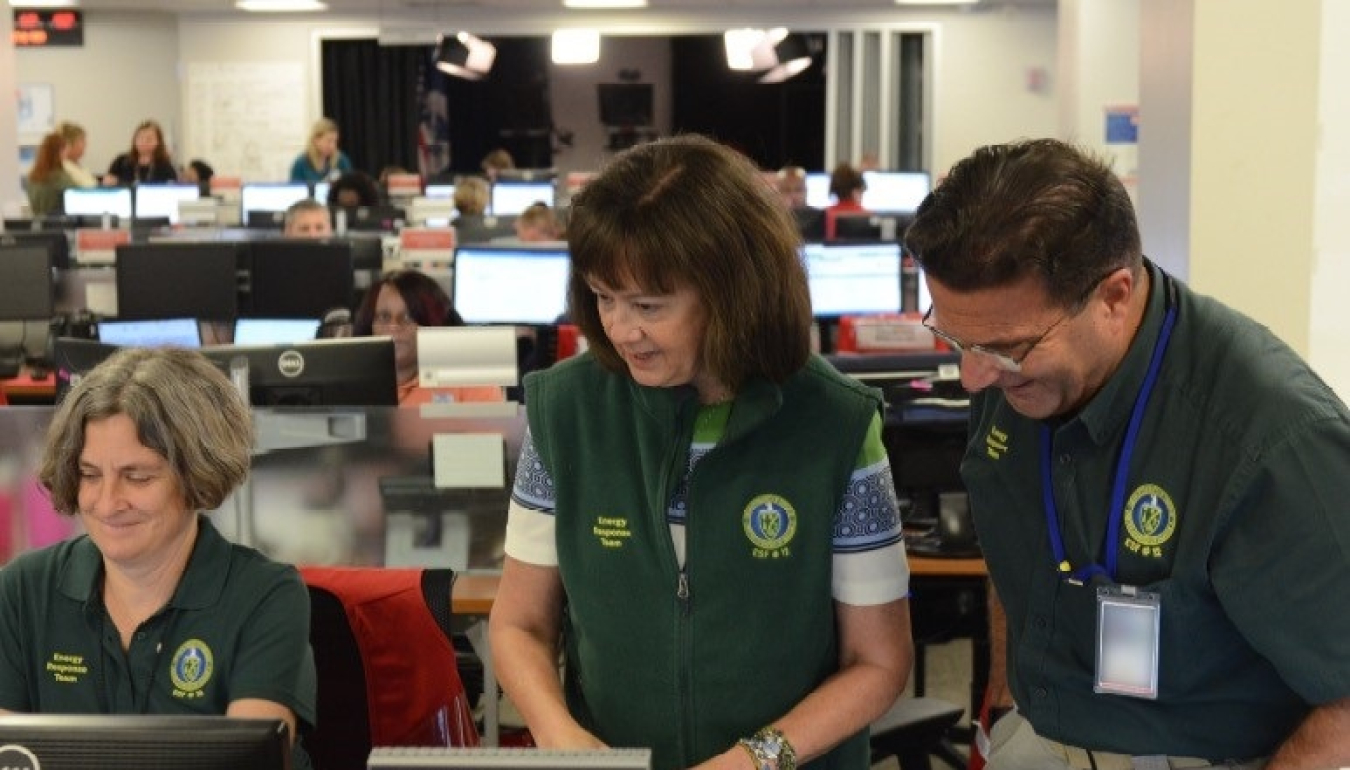Whether hurricanes, wildfires, earthquakes, or volcanic eruption, Department of Energy emergency responders were there.
Office of Cybersecurity, Energy Security, and Emergency Response
January 31, 2019
2018 was a devastating year for natural disasters. Yet for every event, whether hurricanes, wildfires, earthquakes, or volcanic eruption, Department of Energy (DOE) emergency responders were there, working with their partners to aid in restoring power to those impacted.
The Infrastructure Security and Energy Restoration (ISER) division of DOE’s Office of Cybersecurity, Energy Security, and Emergency Response (CESER) coordinates DOE’s response to hazards facing the energy sector, which last year included six hurricanes, three wildfires, two typhoons, a cyclone, an earthquake, and a volcanic eruption. Throughout 2018, DOE deployed over 75 individual volunteer responders from its sites across the country, operating under the emergency management expertise of 18 support staff at DOE headquarters.
What ISER Does
When there is a potential major incident, such as a hurricane, ISER begins preparing staffing plans to coordinate its emergency response responsibilities. Working with FEMA, ISER dispatches responders to both State Emergency Operations Centers in threatened states and the FEMA Regional Response Coordination Center in the threatened region(s) in advance of the incident. Deployed responders coordinate with local counterparts and industry partners in the state to identify any issues that could potentially impact safe and efficient restoration. Meanwhile in Washington, ISER holds pre-disaster calls with state and industry partners to discuss preparations across the threatened area and to help identify any issues that may require federal support.
Once a disaster happens, on-the-ground responders provide subject matter expertise to state and industry partners about assuaging the disaster’s impacts to the energy sector, restoring the system to full capacity, and identifying any unmet needs that may require federal support or coordination. Throughout restoration, ISER holds daily calls with both the electricity and oil & natural gas sub-sectors to ensure there is a unified response effort, as well as coordination calls with the impacted states and various Federal partners. ISER also provides twice-daily situation reports and analysis of impacts to the energy sector, including potential regional and national impacts for large events.
For areas where restoration may be prolonged, responders work closely with local utilities, the affected state(s), FEMA, and the U.S. Army Corps of Engineers on temporary emergency power requirements. In the event a disaster exhausts local resources, deployed responders assist local officials and utilities with damage assessments and in identifying mutual assistance, equipment, and materials needs. The response team and FEMA then coordinate logistics with industry partners to assure materials, equipment, and additional mutual assistance are mobilized to provide timely support.
Following each response, ISER reviews response and recovery processes, procedures, roles, and responsibilities, to evolve their emergency response organization capabilities to optimize future response and recovery support. For remote locations in particular, the recovery and restoration efforts are reviewed extensively, with issues of grid resilience and energy reliability taking precedence in future response planning efforts.
Reliable, resilient, and secure sources of energy are vital to the national and economic security of the United States and are essential priorities for both the Administration and Secretary Perry. Under their leadership, ISER is working with its partners to maintain a reliable national energy infrastructure, applying lessons learned from last year to prepare for the storms and other natural threats of the future.
ISER 2018 Response Efforts
| Event Name | Response Area | DOE Response Start | DOE Response End |
|---|---|---|---|
| Hurricane Maria | Puerto Rico | Ongoing from 2017 | 8/3/2018 |
| Cyclone Gita | American Samoa | 2/11/2018 | 2/20/2018 |
| Kilauea Volcano | Hawaii | 5/14/2018 | 6/4/2018 |
| Carr Wildfire | California | 7/27/2018 | 8/2/2018 |
| Hurricane Hector | Hawaii | 8/5/2018 | 8/11/2018 |
| Hurricane Lane | Hawaii | 8/16/2018 | 8/28/2018 |
| Hurricane Isaac | US Virgin Islands, Hawaii | 9/7/2018 | 9/14/2018 |
| Hurricane Olivia | Hawaii | 9/7/2018 | 9/13/2018 |
| Hurricane Florence | Alabama, Florida, Georgia, North Carolina, South Carolina | 9/7/2018 | 9/23/2018 |
| Typhoon Manghkut | Guam, Northern Mariana Islands | 9/7/2018 | 9/22/2018 |
| Hurricane Michael | Florida, Georgia, North Carolina, Virginia, Maryland | 10/8/2018 | 10/26/2018 |
| Camp and Woolsey Wildfires | California | 11/9/2018 | 11/20/2018 |
| Typhoon Yutu | Guam, Northern Mariana Islands | 11/30/2018 | 1/31/2019 |
| Alaska Earthquake | Alaska | 11/30/2018 | 12/2/2018 |

